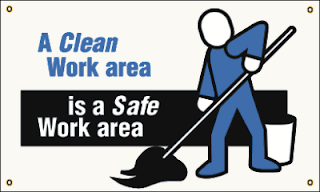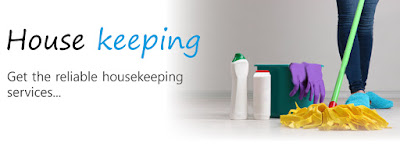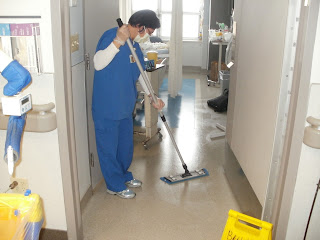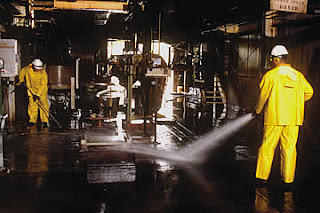Housekeeping at work is
as important as it is at home, especially if you want a safe workplace. People
who must function every day in a messy, disorderly work environment have lower
morale, although they may not be aware of the cause. But the safety
ramifications of poor housekeeping in the workplace are even more important.
Poor housekeeping may result in employee injuries or even death and even difficulty in securing future work.Good housekeeping requires effort and teamwork, but it’s worth it. Here are some general pointers.
- Set housekeeping standards. Make sure they are clear, objective and attainable. Standards should make work easier, safer and healthier. It is best to involve employees when setting standards.
- Measure how well the standards are met. (Remember: what gets measured gets done.)
- Use checklists to help you to systematically measure housekeeping. (See page 3 for a sample checklist.)
- Provide positive feedback. Let employees know how well they are doing and how to improve.
- Encourage housekeeping as a way of life – not just a special activity when visitors are coming.
Whether your workplace
is an office, plant, store, or warehouse, here are some recommended
housekeeping practices:
- Follow safe work procedures and the requirements of the law.
- Keep work areas clean.
- Keep aisles clear.
- Keep exits and entrances clear.
- Keep floors clean, dry and in good condition.
- Vacuum or wet sweep dusty areas frequently.
- Stack and store items safety.
- Use proper waste containers.
- Clean and store tools, items and equipment properly.
- Fix or report broken or damaged tools, equipment, etc.
- Keep lighting sources clean and clear.
- Follow maintenance requirements.
































